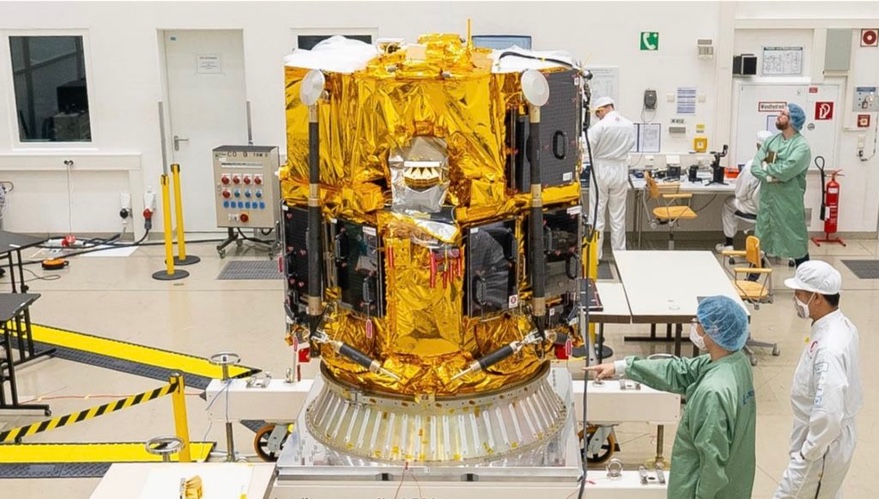WASHINGTON — NASA’s Artemis 1 mission and a Japanese lander are set to launch to the moon from Florida within days of each other in November.
NASA announced Oct. 12 that it has scheduled the launch of the Artemis 1 mission for Nov. 14 from the Kennedy Space Center. The launch would take place during a 69-minute window that opens at 12:07 a.m. Eastern. Backup launch windows are available Nov. 16 at 1:04 a.m. Eastern and Nov. 19 at 1:45 a.m. Eastern, each two hours long.
The agency said that inspections of the Space Launch System rocket and Orion spacecraft after it rolled back to the Vehicle Assembly Building Sept. 27 found “minimal work” needed to prepare them for another launch attempt. That work includes repairing minor damage to the rocket’s thermal protection system from earlier launch attempts and tests, as well as replacing or recharging batteries for the rocket’s flight termination system. NASA expects to have the vehicle ready to roll back to Launch Complex 39B as soon as Nov. 4.
NASA rolled the rocket back to the VAB to protect it from Hurricane Ian as the storm cut across Florida. That ruled out launch opportunities in late September and early October, and the rollback meant NASA could not try again during a launch period open in the latter half of October.
The new launch opportunities are near the start of the following launch period. NASA is pressing ahead with those opportunities despite them being at night. Agency officials earlier suggested they preferred to launch during the day for improved tracking of the SLS on its inaugural flight, but that would have required waiting until at least Nov. 22, in the latter half of the launch period.
The new launch date for Artemis 1 means it is now scheduled for launch within days of a commercial lunar lander mission. Japanese company ispace announced Oct. 12 that it plans to launch its first HAKUTO-R lander on a Falcon 9 between Nov. 9 and 15 from Cape Canaveral.
The M1 lander completed testing last month at a facility in Germany and it being prepared for shipment to the launch site. The lander is carrying a variety of payloads, including a small lunar rover called Rashid developed by the United Arab Emirates.
“For me this is a milestone on the road to realizing our vision, but I am already proud of our results,” Takeshi Hakamada, chief executive of ispace, said in a statement. “I look forward to watching the launch alongside all of our employees and those who have supported us.”
That schedule puts ispace ahead of two American companies also preparing lunar landers for launch. Both Astrobotic and Intuitive Machines had planned to launch their first lander missions before the end of the year, carrying payloads that included those provided by NASA though its Commercial Lunar Payload Services (CLPS) program. However, Intuitive Machines said over the summer that the Falcon 9 launch of its IM-1 mission would slip to early 2023.
Astrobotic, flying on the inaugural mission of United Launch Alliance’s Vulcan Centaur, had been holding a 2022 launch until Oct. 10, when ULA announced it was delaying the launch to the first quarter of 2023 to give Astrobotic more time to complete its lander. It was not clear that Vulcan itself would be ready to launch this year because of delays in the delivery of the BE-4 engines that power its first stage.
In an Oct. 10 statement, John Thornton, chief executive of Astrobotic, said his company would release more details about its launch plans in the near future, but noted the lander has recently returned to the company’s Pittsburgh headquarters after completing pressure testing of its propulsion system.
“We are now proceeding with final spacecraft assembly which includes installation of the solar panel along with avionics, sensors, communications equipment and payloads, which are already tested and integrated with their corresponding decks,” he said. “As Peregrine begins its journey to the Moon in early 2023, it will be an incredible accomplishment for Astrobotic, the city of Pittsburgh, and the space industry as a whole.”
Tokyo-based ispace is not directly a part of the CLPS program. However, its U.S. office is part of a team led by Draper that won a CLPS award in July for a lander mission to the far side of the moon scheduled for launch in 2025.
